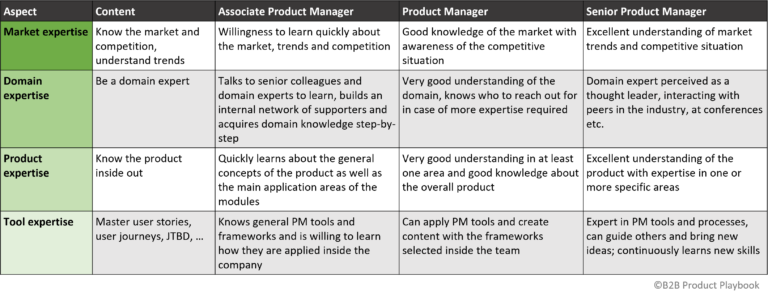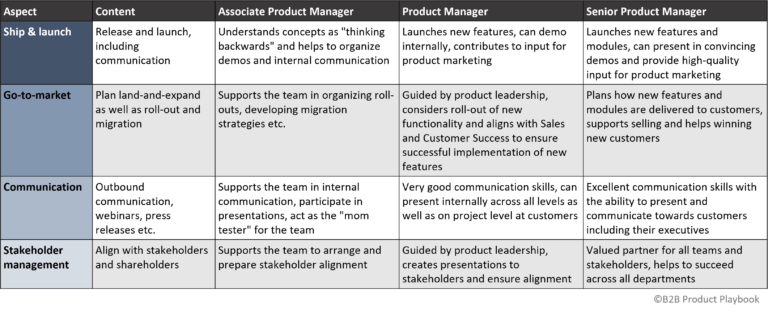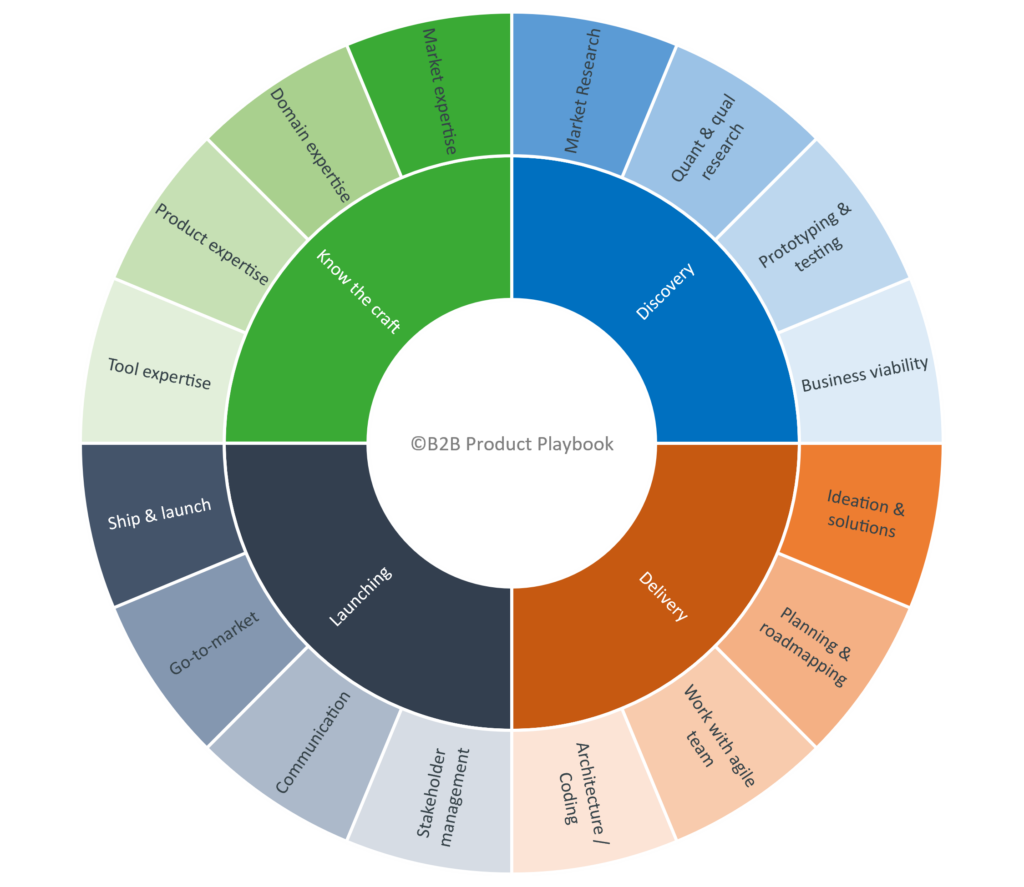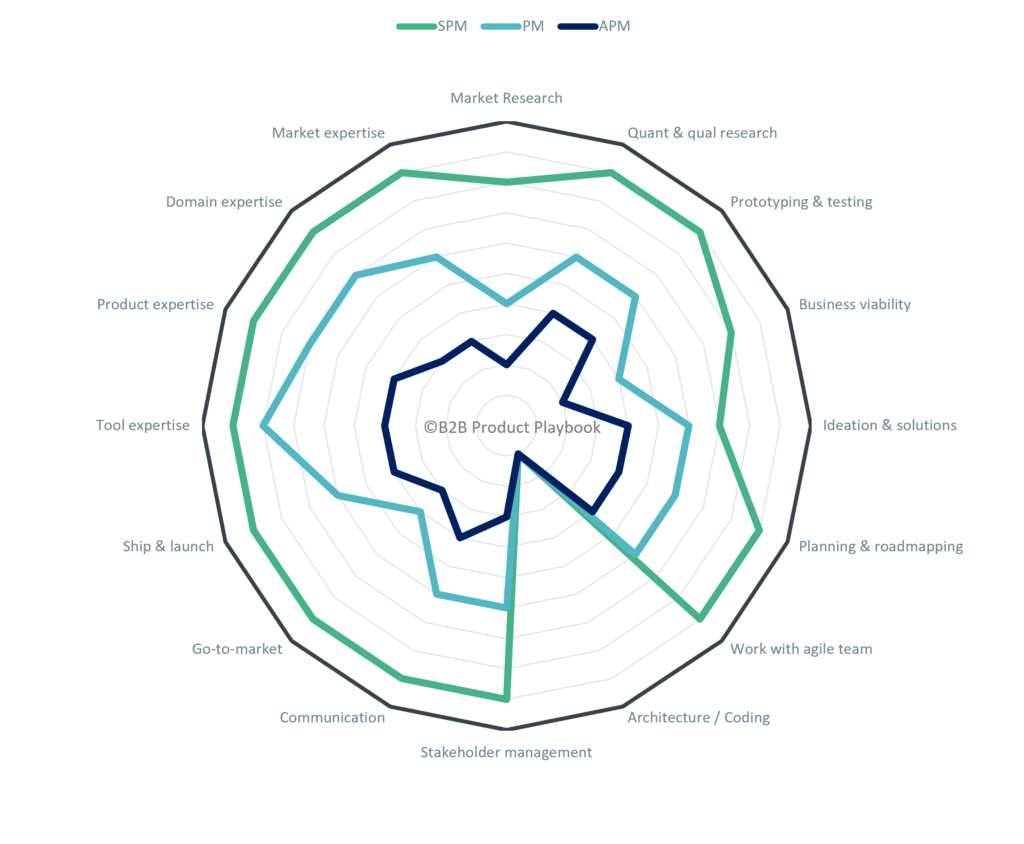Competency Assessment
The Product Management Competency Role Map
Know the Craft
As the first area of expertise, knowledge about the domain and the product comes top of all. If nothing else, a Product Manager has to know about the market the company is operating in, its customers, and its product offering. Of course, the tools of the PM trade are required, too:
Product Discovery Skills
Product Delivery Skills
After discovery, another set of skills refers to being able to develop ideas and drive implementation of solutions:
Launching a Product
Finally, when it’s time to release a product or feature, dedicated skills are required to ensure successful roll-out:
Using the Role Map in Career Talks
- To prepare for the career talk, the Product Leader distributes an up-to-date version of the role map and asks every team member for their self-assessment.
- Both the Product Manager and the Product Leader prepare their assessment independently.
- Laying both assessments side-by-side, discrepancies become immediately obvious and the Product Manager and her manager can discuss opinions, identify gaps and agree on next steps to close these gaps.
- For both, the employee and her manager, the role map provides a fully transparent tool to discuss about promotions and the skills needed for the next step in the career of a Product Manager.
The Competency Wheel
The above PM Role Map is a tool to coach team members through their careers in Product Management. Sometimes, however, a more visual tool is needed that allows depicting the current state of affairs and maybe also map out how different team members compare against each other — or how a candidate compares a target state, say when discussing promotions.
As can be seen easily, the inner circle reflects exactly the same categories that were used above to group skills and competencies of Product managers while the outer ring lists the respective skills as explained above.
For example, the following are all part of discovery:
- Market research to find out about market sizes, growth rates, competition, etc.
- Quantitative & qualitative research to learn from user interviews and data
- Prototyping & testing to validate ideas
- And finally, research to ensure business viability
Being more visual than the tables above, the PM Competency 4×4 Wheel allows for some very nice and easy-to-grasp visualizations when comparing a team member against the requirements of the current position — or against those of the next position when a promotion is under discussion:
- Utilize a simplified scale, such as
- 1 = Cannot do
- 2 = Can do under supervision
- 3 = Can do independently
- 4 = Can guide others
- Rate each of the 16 skills in preparation for the career talk, exactly as described for the PM Role Map above.
- Display the results on a simple radar plot.
Thus, gaps and improvement areas of a Product Manager become immediately visible, so that objectives and focus areas for the coming months can be agreed between the Product Manager and her boss.
A Step by Step Guide for Using the Model
Update: Upon popular request, we have decided to not only describe our method here but make a ready-to-use template available for free via this resource page.
To benefit from the model the most, we recommend a quarterly cadence of 1:1 performance review meetings which can be run as follows:
Explain the Model
Specifically when the model is used for the first time, the Product Leader needs to explain its structure and content: What are the skills we aim for in the various dimensions, what do we mean, and how do we assess?
Assess the Status Quo
Discuss and align
Watch out for Discrepancies
When discussing, specifically watch out for areas where both parties disagree significantly. Do not get obsessed about nuances but when the Product Manager believes she can work on a task completely independently while the Product Leader sees the need for constant supervision – then you have a mismatch. (By the way, also the other way around when the Product Manager does a great job but shows a lot of self-doubts.)
Detect Gaps toward Next Step
Select a Focus Area
Agree on SMART Goals
Finally, for these focus topics, define SMART goals so that when you meet again in a few weeks or months, you can track progress.
Further Reading

Coaching Tools - The Assessment
This article discusses the technique that Marty Cagan use and advocate for assessing a product manager. It is the foundation for then coaching the person to success.
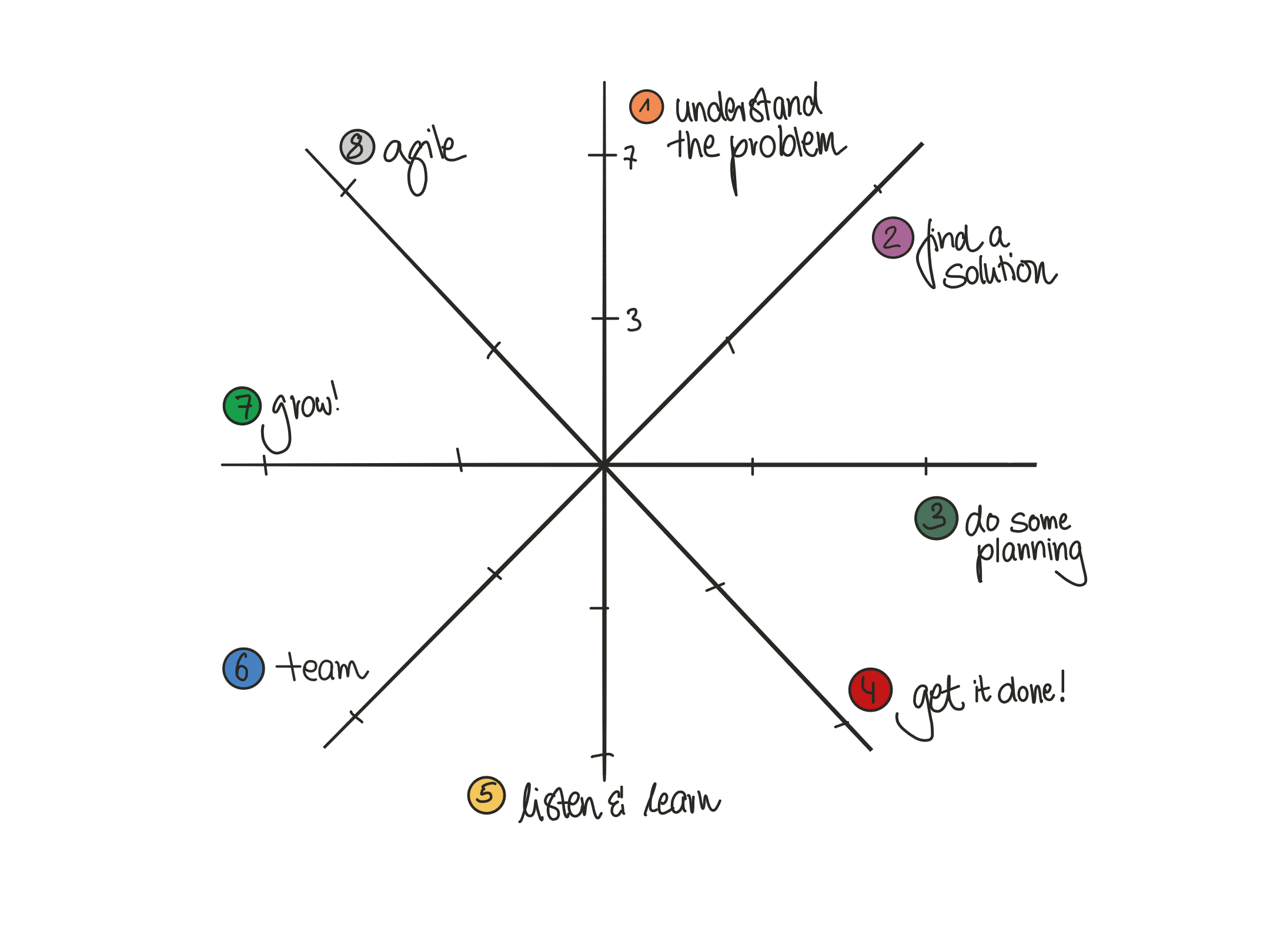
PMWheel Framework
You are managing product people and are searching for a framework that helps you fostering career conversations with your product managers and assessing your product people in a structured way.
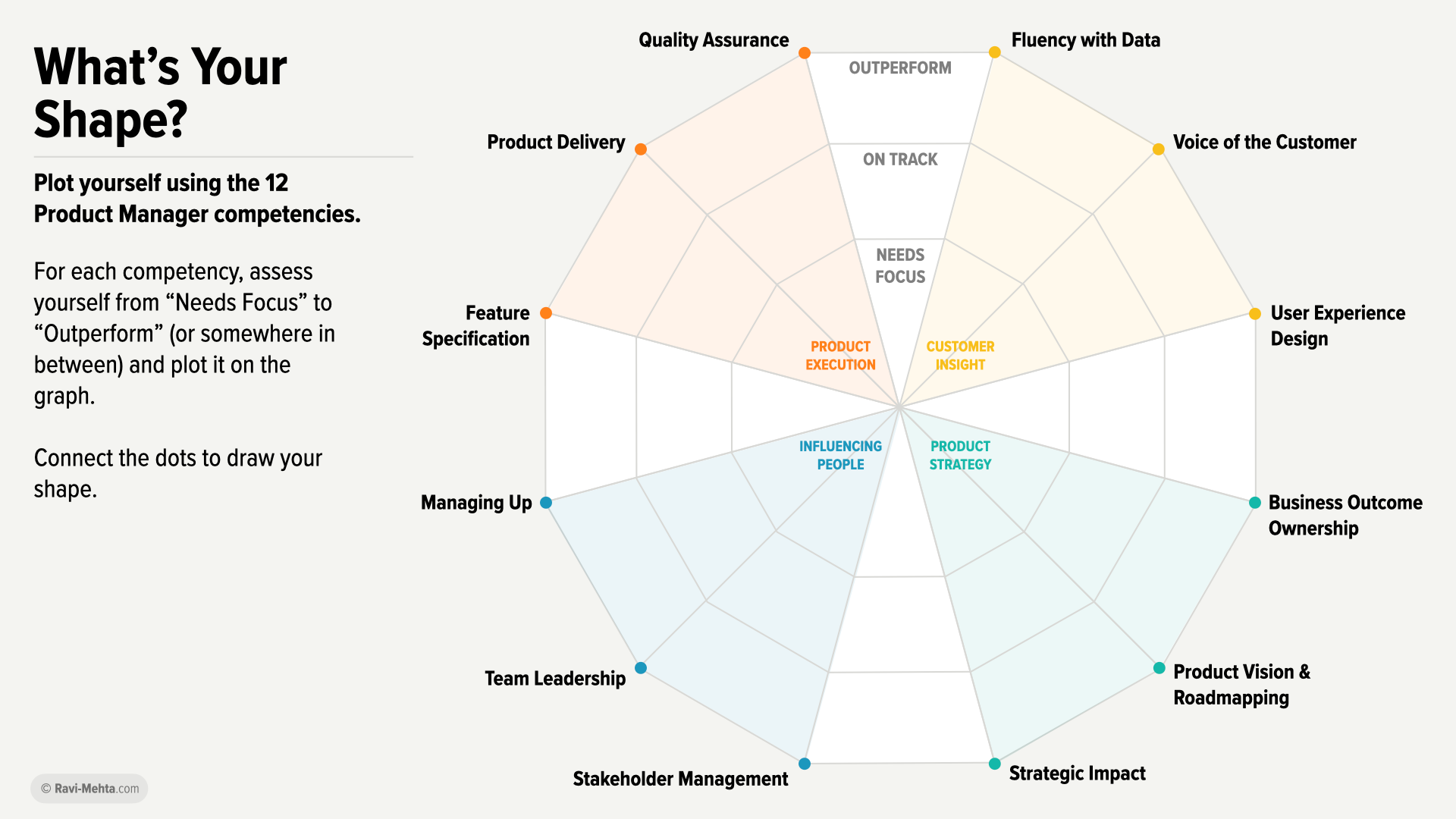
What’s Your Shape?
A Product Manager’s Guide to Growing Yourself and Your Team

Product Self Assessment
A self-assessment tool for Product Owners and Product Managers.

